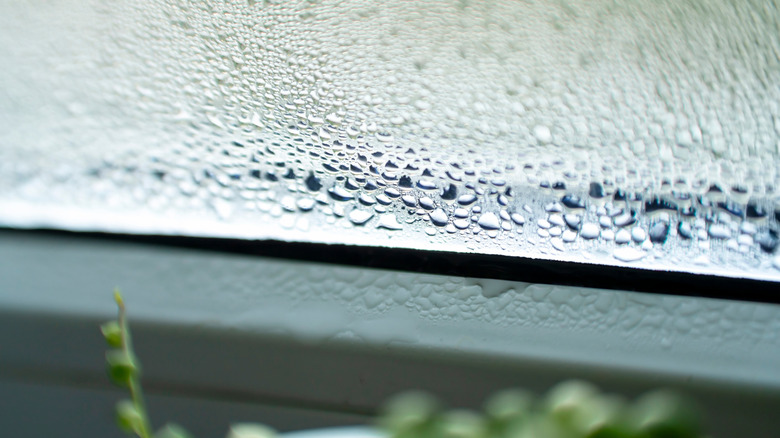Prevent Window Condensation During Colder Months With A Curtain Tip
We may receive a commission on purchases made from links.
When you throw your curtains open after a cold night and discover your windows are fogged with a fine layer of water you may not think in terms of overnight science experiments, but your windows are giving you a crystal-clear demonstration of the condensation process. The same natural phenomenon leads to the cool, thin layer of moisture on the outside of your glass of iced tea or cold beer. Condensation occurs when the collision of warm and cold air produces water. On windows, this excess moisture can damage the frames and allow mold to grow. As the water drips onto the windowsill, it can damage the paint and eventually the wood beneath it. Metal frames and windowsills are unlikely to be harmed in the short term, but the surrounding wood and wall materials are vulnerable to long-term moisture damage. Mold will thrive whenever and wherever it has the opportunity, and it should be removed from windows and sills as soon as possible — otherwise, it will continue to grow.
To prevent condensation on windows, keep your curtains open when it's cold outside. Doing so will equalize the interior temperature around the glass, preventing warm, humid air from being trapped against the window and allowing you to avoid condensation on the windowpane. Also, note that condensation may be happening even if you don't see it. Dampness around the window or on the sill, the appearance of mold, rust on metal frames, a musty smell, and cracking paint are all signs that it's occurring. Preventing condensation completely may not be possible, but keeping your curtains open will reduce its severity. If you observe a layer of condensation on the glass, always wipe the windows dry.
How to prevent or reduce condensation on windows
The temperature of the air determines how much water vapor it can hold. Warm air holds more water; cooler air holds less. When the warm air in your house bumps up against a window that's been cooled by the colder outdoor air, the warm air cools down to the point where it can no longer hold vapor. The water that's released forms on your window as condensation. If you've ever noticed that one part of a window doesn't get condensation, there may be a penetration there that allows warm air to leak out and raise the temperature of the exterior glass surface. Use weather stripping or caulk to keep the warm air in.
If the indoor humidity levels are high — as they often are due to activities that release vapor into the air, such as cooking or showering — condensation is more likely to form on windows. Apart from keeping your drapes open, keeping the indoor humidity at an acceptable level is an effective way for preventing damp windows. In the winter, the relative humidity inside should be around 40%. Your phone may have an app to check the humidity, and if it doesn't, you can pick up an inexpensive humidity meter like this ThermoPro Digital Hygrometer.
If the humidity reading is higher than 40%, you can prevent window condensation without using a humidifier. For one, make sure the kitchen and bathroom have exhaust fans and that you use them when you bathe or cook. Likewise, leave interior doors open to promote air circulation and run your ceiling fans, even in the winter (just remember to change the direction of the fan's spin).

